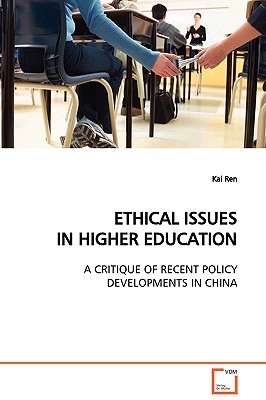
- We will send in 10–14 business days.
- Author: Kai Ren
- Publisher: VDM Verlag
- ISBN-10: 3639110439
- ISBN-13: 9783639110432
- Format: 15.2 x 22.9 x 0.4 cm, minkšti viršeliai
- Language: English
- SAVE -10% with code: EXTRA
Ethical Issues in Higher Education a Critique of Recent Policy Developments in China (e-book) (used book) | bookbook.eu
Reviews
Description
Over recent years one higher education ethical issue, often referred to as 'academic corruption', has been increasingly widely recognized. However, there is little academic literature on defining and explaining academic corruption, and suggesting effective counter-measures. This book explores the major issues surrounding academic corruption via critiquing the policies developed by the Chinese Ministry of Education to control academic corruption. The critique shows that the reactions of the policy makers to the apparent deterioration of academic ethics have been cautious and slow, but are heading in the right direction. In particular, the policy has undergone a change from quasi-symbolic to material. Furthermore, an investigation of academic corruption as it currently exists in China provides an in-depth depiction of the super-complexity of real-world academic ethics. Two core issues are identified and a triangle power dynamics is established to critically analyse the problem. This book should be particularly useful to higher education policy-makers, leaders, teachers and anyone else who is interested in issues of policy and ethics or the Chinese educational development.
EXTRA 10 % discount with code: EXTRA
The promotion ends in 22d.23:26:35
The discount code is valid when purchasing from 10 €. Discounts do not stack.
- Author: Kai Ren
- Publisher: VDM Verlag
- ISBN-10: 3639110439
- ISBN-13: 9783639110432
- Format: 15.2 x 22.9 x 0.4 cm, minkšti viršeliai
- Language: English English
Over recent years one higher education ethical issue, often referred to as 'academic corruption', has been increasingly widely recognized. However, there is little academic literature on defining and explaining academic corruption, and suggesting effective counter-measures. This book explores the major issues surrounding academic corruption via critiquing the policies developed by the Chinese Ministry of Education to control academic corruption. The critique shows that the reactions of the policy makers to the apparent deterioration of academic ethics have been cautious and slow, but are heading in the right direction. In particular, the policy has undergone a change from quasi-symbolic to material. Furthermore, an investigation of academic corruption as it currently exists in China provides an in-depth depiction of the super-complexity of real-world academic ethics. Two core issues are identified and a triangle power dynamics is established to critically analyse the problem. This book should be particularly useful to higher education policy-makers, leaders, teachers and anyone else who is interested in issues of policy and ethics or the Chinese educational development.


Reviews